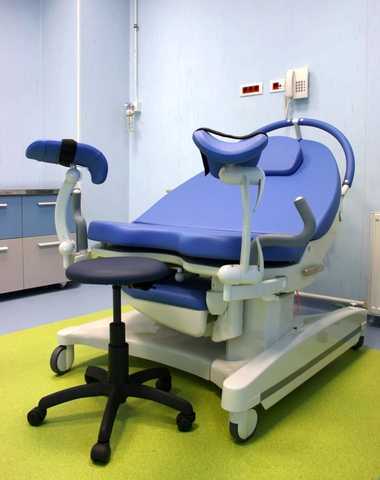A few weeks ago, a pelvic course participant shared some sensitive and intimate thoughts about being at a course and being "the biggest girl in class." This week, we will address specific strategies for communicating with your patients and for adapting your exam techniques when appropriate. The following quote is from an educational book for Nurse Practitioners, and echoes a very healthy and realistic sentiment about our role when working with patients in pelvic rehabilitation.
"If the exam is limited by obesity, the patient should be told in a clear, non-judgmental manner. Patients have a right and responsibility to understand the findings of the health care visit."

Unfortunately, according to the authors, women who are obese are less likely to receive routine gynecologic care due to bias and fear of judgement, or even practical issues like exam tables, gowns, and equipment not being adequate. Another issue is that of mobility: is the exam table too narrow for safety and comfortable positioning? In my own clinical practice, I have had patients ask me: "Is that massage table going to hold me?" In order to answer that question, you need to know what the safe weight limits are for your chairs, walkers, exam tables, and any other equipment your patients may use. You might imagine that if a patient is concerned about falling off of a table, completing an appropriate exam could be difficult due to muscle guarding. Other techniques recommended include the following:
- ask an assistant to gently hold back skin folds if vagina or vulva is obscured
- ask the patient to flex her hips upward if able
- ask patient to help hold back excess skin in lower abdomen if helpful
- ultrasound may be used rather than palpation as needed (this is in reference to a medical gynecologic exam, but how might rehab US contribute to our toolkit?)
- document any difficulty with the examination - placing a small towel or pillow under the patient's hips may also help in viewing the cervix
This "Bias Tool Kit" offers further suggestions to avoid causing harm when evaluating a woman who is obese:
- if you would like to weigh the patient, ask for consent first, using sensitive language, i.e. "would you like to be weighed today?" and maintain privacy
- in addition to considering equipment like tables, think about having a stepstool with a handle, properly sized blood pressure cuffs, sturdy, armless chairs, and a long exam speculum
- use words that patients find more acceptable, such as excess weight or BMI
Advice to the nurse practitioners include the following to counter the fact that obese women are often discriminated against:
"If the exam is limited by obesity, the patient should be told in a clear, non-judgmental manner. Patients have a right and responsibility to understand the findings of the health care visit." For example, for a medical exam: "Due to the shape and size of your body, I wasn't able to feel your uterus and ovaries." Any similarly needed communications can be shared in a professional and warm tone.
While sensitive topics can require patience, practice, and an abundance of professionalism, everyone wins when difficult subjects are approached with honesty. Thanks again to Erin B. for shining her light on this sensitive and valuable topic.
Even after teaching for a couple of decades, both in graduate level courses and in continuing education settings (live and online), I am humbled by all there is to learn and relearn about how to teach well. We all teach every day, regardless of what setting or roles we work in, and are required to share our thoughts and knowledge with respect, equanimity, and non-judgement. After teaching a course last month, I received feedback about an important topic that was not clearly addressed from an instructional or clinical standpoint, and the participant who brought it to my attention agreed to share her experience so that we as pelvic rehab providers can do a better job of addressing the issue when needed. The following post was written by Erin B. after I encouraged her to share her own thoughts about the issue.
"Having recently participated in the PF1 class after several years out of the classroom-style of continuing education, I made a few observations I felt compelled to share. (I do want to preface this with the fact that I am fully aware that my own insecurities play a role in my experiences and I recognize that they may alter my judgment of the situation.)

I am 5' 4" and currently 240 pounds. Although that is 50 pounds lighter than I was 6 months prior to attending this class, it is still significantly larger than 90% of the class participants, lab assistants and instructors. I am not someone who feels that fat is healthy. I do not feel that you need to act like I am in as good of shape as anyone else in the room. However, I do feel that there are certain assumptions made about me that are based on my physical appearance alone. Take a minute and think about your first reaction to seeing a person who is obviously overweight. (I do realize that I have made my own assumptions about some of you as well!) Just because you are much thinner and more fit looking I assume you exercise regularly, you always eat healthy and you judge me negatively for my appearance. I do know that my assumptions about you may be just as wrong as what I believe you assumed about me. However, when I see that the larger people in class have placed themselves more to the back of the room, when I have a hard time finding a lab partner and when the lab instructor struggles with how to say to the partner that got stuck with me "things may be different on her", I begin to feel like I am taking something away from the class experience for everyone else. I do not want to hinder another clinician's learning process so I don't push anyone to be my partner, but then I am actually denying myself the learning opportunities I came for. Not to mention that I may be denying the other participants the opportunity to learn how to handle a client that may look and feel like me.
The reality of our world is that there is a very large obese population. I firmly agree this leads to a multitude of chronic illnesses and astronomical medical costs for the individual and our society as a whole. It does need to be addressed on a large scale. However, we as clinicians don’t know where these individuals are on their weight journey. For someone like me who has made drastic lifestyle changes to move me in a positive direction but have not yet gotten my appearance in line with the "norm" that the health care professionals, the media and society are pushing, your response to me can be devastating to my progress, my hope and my desire to continue toward a healthier lifestyle. Again I want to acknowledge that this is as much my problem as it is for those around me and I am addressing this as well. But please have the awareness that an obese person above all is a PERSON FIRST! Then their physical size becomes just another item on the list of "facts" about them, instead of a source of anxiety and separation. Approaching an obese person with respect, acceptance, honesty and openness not only puts them at ease, it also strengthens the rapport that is so crucial in pelvic rehabilitation.
Although I was born and raised in the north east, I now live in Alabama, home of corn bread, fried chicken and sweet tea. The population I deal with is more likely to be at least overweight if not truly obese. So, quite honestly, the practical instruction of how pelvic floor evaluation and treatment may be different with the obese patient would be directly beneficial to my practice. This might include openly addressing in labs how to assess/reposition an obese patient will give each therapist an awareness and confidence when approaching this population and may minimize the patient's embarrassment and keep the doors of trust and communication open. Or taking a moment to recognize the larger participants in the classroom setting and professionally suggesting during a lab session how they can reposition themselves and still affectively achieve appropriate assessment/treatment for the patient would make the transition from class to the reality of the clinic more smooth. Also, taking a moment to offer suggestions for what the obese patient who can’t physically reach their perineum or even palpate the pubic symphysis and or coccyx and doesn’t have a willing partner to assist can do to effectively complete the rehab activities suggested. You have to admit, this is not an easy specialty of practice to broach in the first place, and anything to take the pressure off of the clinician and or patient is helpful!
I so greatly appreciate the respect and professionalism the many delicate topics related to pelvic health are addressed in this program. I would also appreciate that same respect and professionalism when it comes to the reality of the many different body types that are the represented in our practices!"
Thank you to Erin for sharing her thoughtful suggestions, and reminding instructors and fellow course participants that an open, curious and helpful approach is needed for all situations. We at the Institute will address this issue among our instructors so that we can provide more clear guidance regarding patient and provider positioning. Stay tuned for a blog post about helpful positioning and communication tips for working with patients who are obese.









































